Keeping goldfish can be a fun and rewarding experience if done correctly. If properly cared for, goldfish can easily live to be 15 years old, and have been known to live to be 43 years old.
Size Considerations
Goldfish get very large. Fancy varieties often get 6 to 8 inches and the single tailed varieties often get up to a foot and a half long. Not only do goldfish get long, but they have a very large body mass. This makes for a very large fish. Adult goldfish (6 inches or larger) should have at least 30 gallons per goldfish. Very large single tailed goldfish should really have about 50 gallons per goldfish. This usually means they are best kept in an outdoor pond. This may seem like a lot of water for one fish, but goldfish produce a lot of waste, so they need a lot of water to dilute this waste. At a stocking density of 30 gallons per 6 inches of goldfish, or 5 gallons per inch of goldfish, weekly 50% water changes should be performed to keep the nitrates below toxic or harmful levels.
What you need
When people buy goldfish in stores, they are usually buying a cute little 1 inch fish and a gallon bowl. In these conditions the fish usually do not live very long. They may last a few months before they finally perish. To successfully start out with young goldfish, a 10 gallon tank can be used, along with a power filter overrated for your size tank. For example, if you have a 10 gallon tank, buy a filter that is rated for 10-20 gallons rather than one that is rated for 5-10 gallons. A thermometer is also useful so you can monitor water temperature. Gravel at a pound per gallon will make the tank look nice and provide more surface area for good bacteria to grow. I usually recommend a heater as well, to keep the water temperature steady, but it is not a necessity. You will also need a water conditioner that removes chlorine and chloramines from your water. All of your equipment should be purchased and set up before you buy your fish.
Setting Up
Once you have purchased all of your equipment it is time to find a suitable place to set it up. A 10 gallon tank full of water with gravel and decorations can weigh up to 100 pounds. To be safe, buy a stand made for the tank. If you want to use something else, keep in mind how much the tank will weigh and make sure that all four of the corners are evenly supported. The tank should not be in direct sunlight or in front of a heating or cooling vent.
Now that you have found an appropriate place to set up your aquarium, rinse your gravel in room temperature water to remove shipping dust and place it in your aquarium. Sloping it so that it is higher in the back and lower in the front usually gives a nice look to it. Set a bowl or plate onto the gravel and start filling your aquarium with room temperature water, pouring it over the plate or bowl so you do not disturb the gravel bed. Once your tank is full, you can put your filter on it. Follow the directions that came with your filter to get it started. If you purchased a heater, set your heater in the aquarium but wait at least 15 minutes before plugging it in. Now you can add the water conditioner as well. Let your tank run for a full 48 hours before you go to purchase your new little fish. Now would be a great time to decorate the aquarium with fake plants or other decorations. Try to make the aquarium look appealing without fish in it. If the tank looks good without fish, you will not be relying on the fish to make it look full and interesting and you will be less likely to want to overstock it.
Cycling and Getting Your Fish
Once your tank has been set up for 48 hours you can do one of two things. You can go out and purchase 1 (only one!) small goldfish. Or you can fishless cycle your tank using pure ammonia. For a how to on fishless cycling go here:Fishless Cycling. When you purchase your goldfish, also purchase food at the same time. Buy a small bottle and put the date on it that you bought it. You should replace it after about 6 months.
If you decided to buy one little goldfish (about an inch long). You will now need to watch your water quality carefully for the next 6 to 8 weeks. Feed your fish very lightly and test your water often, every few days is good. You can purchase a test kit at a store, or many local fish stores will test the water for you. Your tank is going to be going through what is called the cycle process or new tank syndrome. This is the time period in a new tank that good bacteria grow in your gravel that help to break down the waste from your fish. Until this bacteria grows (which can take a total of 6 to 8 weeks in most tanks) your water can become toxic to your new little fish. Regular testing allows you to see when it is toxic.
If the ammonia or nitrite reaches 1.0ppm do a 25% water changes to bring the level down a little bit. If the nitrate ever goes about 20ppm again, do a 25% water change to lower the level. You may end up doing several 25% water changes in a week. Your pH is not much of a concern as long as it remains stable. Your tank will probably also be cloudy during at least some of this time. This is perfectly normal and will eventually go away on its own. Once your tank has fully cycled you can add 1 more small (1 inch) goldfish. If this is your first time keeping goldfish, I recommend fantail goldfish, or oranda goldfish. I do not recommend you get the common single tailed goldfish as they will outgrow a 10 gallon very quickly.
Maintaining Your Tank
Now that you have your 2 small fancy goldfish and a fully cycled aquarium, you will need to maintain it. Once a week you should change about 50% of the aquarium water with fresh water. I like to use water that has been aged for 48 hours and has some water condition in it to remove chlorine and chloramines in it. You will also need a gravel syphon. There should be directions on the package of how to use the gravel syphon. Before you start draining the tank make sure you unplug all of you aquarium equipment (filter, heat and light) for safety. Each week clean one half of the gravel, and alternate between sides with each water change. Once you have drained half of the water, slowly refill it with the aged water you had set aside.
Upgrading
In about a year you will need to think about upgrading your goldfish to a larger aquarium. A good next step up would be a 30 gallon tank. Eventually you will need about 60 gallons for your 2 goldfish, because they will get big! When purchasing aquariums, try to get ones that are wider (deeper), rather than longer as this will help make the tank look fuller than it is because the viewing panel will be smaller. For example, instead of buying a 4 foot long 55 gallon tank for your 2 goldfish, consider buying a 56 gallon column tank that is only 30 inches long. You will have roughly the same amount of water space, but the tank will look fuller than the 4 foot tank would.
To review what you will need to start off and maintain two small, 1 inch, fancy goldfish:
1) 10 gallon tank
1) power filter rated 10-20 gallons
1) 10 pound bag of gravel
1) Thermometer
1) aquarium heater (optional, but recommended)
1) bottle of chlorine and chloramine removing water conditioner
1) gravel syphon
1) test kit that tests for ammonia, nitrite, nitrate and pH
1) container of a high quality goldfish food
Wait at least 6 to 8 weeks, or until your tank is fully cycled to add a second small goldfish. Do not keep more than 2 small goldfish in a 10 gallon aquarium.
Do weekly 50% water changes using a gravel syphon to clean the gravel at the same time.
Upgrade your goldfish to a bigger aquarium in about a year or so.
Have fun with your new finned friends!
Image from: http://www.flickr.com/photos/beastman/378773926/
Our goldfish tank does not have a suitable substrate for plants, it has large river rocks in the bottom. This was a problem. Amazon swords need to have a good substrate to send their large root systems into, to secure them down and to get nutrients. A need fueled an idea . . . Pot Them! We headed out and got three 3" clay pots, making sure they had not been treated with anything. I rinsed them several times in hot water to make sure there wasn't any residue on them that would adversly affect our beloved goldfish. Then I set to work.
The first step was to get some gravel and put it in the bottom of the pots. I filled the pots about half way at first. Then went some Flourish Tabs I had left over and I
nestled them into the gravel. I put one tab per pot. Next, another thin layer of gravel over the tabs. By the end of this the pots were almost 3/4 full of gravel.
Then I had to get some plants. We only needed 3, and I had many to choose from. Because we want these to be background plants, I wanted to find the 3 biggest and healthiest looking plantlets. First I cut the runner off of the mother sword and then inspected the plants and picked out the ones to use. I cut those off of the runner. Once they were cut off I trimmed
any damaged roots and then wrapped the roots into a little ball to help keep them from getting damaged during the planting process. I then nestled them into the gravel in their prospective pots and filled the pots up the rest of the way with gravel, to hold the plants up. The end result was 3 nice looking amazon sword plantlets in some nice looking clay pots.



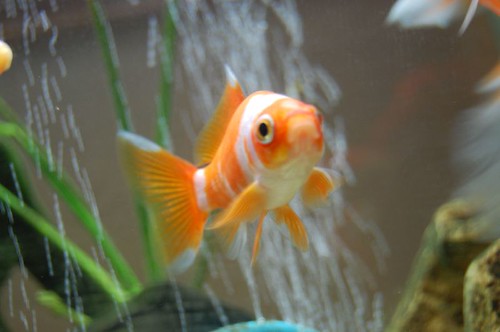 There are many different types of goldfish. Even though they may look different they are all the same species of fish, and can interbreed and produce viable young. Just like there are different breeds of dogs, but they are all still dogs. Goldfish get large, with the smallest usually getting up to 8 inches, and the largest up to 18 inches. They are best suited for large aquariums or ponds. For indoor aquaria a 6 inch goldfish should have at least 30 gallons of water to itself. Outdoors, 50 gallons per goldfish is usually a good place to start.
There are many different types of goldfish. Even though they may look different they are all the same species of fish, and can interbreed and produce viable young. Just like there are different breeds of dogs, but they are all still dogs. Goldfish get large, with the smallest usually getting up to 8 inches, and the largest up to 18 inches. They are best suited for large aquariums or ponds. For indoor aquaria a 6 inch goldfish should have at least 30 gallons of water to itself. Outdoors, 50 gallons per goldfish is usually a good place to start. 
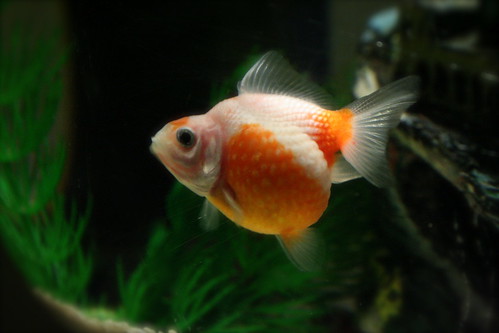 Pearlscale - These goldfish are much rounder than fantails, and their most distinctive feature is that each scale is raised and gives the appearance of a pearl. These are one of the harder to care for goldfish types, they need extremely clean water and often need supplemental calcium to maintain the pearled look.
Pearlscale - These goldfish are much rounder than fantails, and their most distinctive feature is that each scale is raised and gives the appearance of a pearl. These are one of the harder to care for goldfish types, they need extremely clean water and often need supplemental calcium to maintain the pearled look. Due to an eye injury in one of my two cats, my bedroom has needed to be in complete darkness. She has a scratch on her cornea and is being given a pain killer that is applied directly to her eye. This causes her pupil to dilate, so she needs complete, or near complete darkness or it will hurt her eye. Both the fish tanks are in the bedroom. The gold fish tank is easy, just keep the light off. They won't care to much and the java fern will survive. The 60 gallon tank however is heavily planted and cannot go a week or so without light, so I have taped garbage bags around the tank. This way the lights can be on, but the light exiting the tank in minimal. My fish seem to find this very interesting, or perhaps I am just finding their reactions very interesting.
Due to an eye injury in one of my two cats, my bedroom has needed to be in complete darkness. She has a scratch on her cornea and is being given a pain killer that is applied directly to her eye. This causes her pupil to dilate, so she needs complete, or near complete darkness or it will hurt her eye. Both the fish tanks are in the bedroom. The gold fish tank is easy, just keep the light off. They won't care to much and the java fern will survive. The 60 gallon tank however is heavily planted and cannot go a week or so without light, so I have taped garbage bags around the tank. This way the lights can be on, but the light exiting the tank in minimal. My fish seem to find this very interesting, or perhaps I am just finding their reactions very interesting.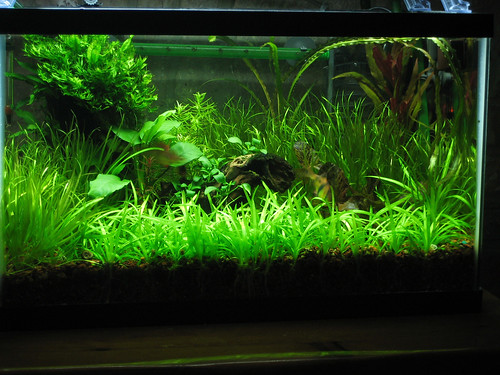 Providing some form of carbon to plants in a high light system is a necessity. Plants utilize carbon during photosynthesis to produce glucose, which is what the plants use for energy. In a high light situation the plants are growing quickly and require a lot of energy to maintain health and the quick growth, therefor they need a lot of carbon. One of the easiest ways to add supplemental carbon to your planted aquarium is via the use of carbon dioxide (CO2). If you have a low light tank additional CO2 is not usually neccessary. If you feel your plants in a low light tank are needing a carbon source try flourish excel.
Providing some form of carbon to plants in a high light system is a necessity. Plants utilize carbon during photosynthesis to produce glucose, which is what the plants use for energy. In a high light situation the plants are growing quickly and require a lot of energy to maintain health and the quick growth, therefor they need a lot of carbon. One of the easiest ways to add supplemental carbon to your planted aquarium is via the use of carbon dioxide (CO2). If you have a low light tank additional CO2 is not usually neccessary. If you feel your plants in a low light tank are needing a carbon source try flourish excel.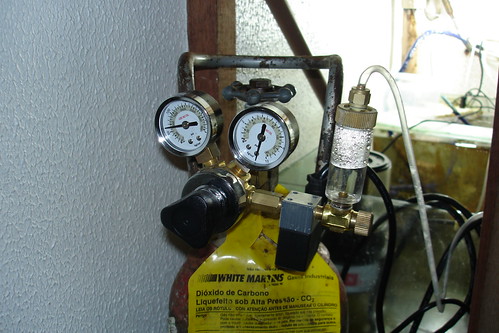 ( aka tank) of liquid CO2, a regulator, a needle valve, a bubble counter (optional), and a CO2 diffusion reactor.
( aka tank) of liquid CO2, a regulator, a needle valve, a bubble counter (optional), and a CO2 diffusion reactor. 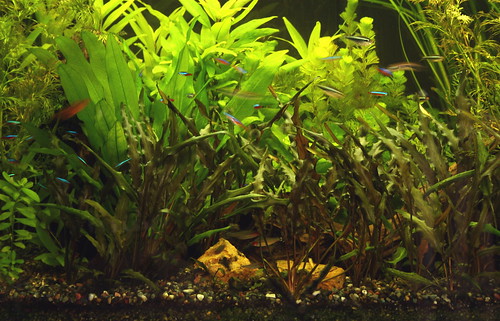
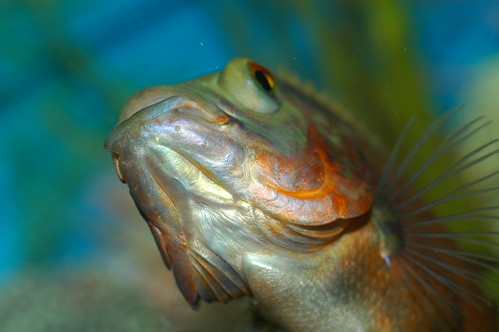 Oscars are possibly one of the most widely known and most popular of the cichlids. Many people who are not even into fish know what and oscar is. Their popularity is due to their great personality and their great appetite. Oscars quickly learn to recognize their owners and are more than willing to just about anything they think will fit into their mouth. Oscars are a member of the cichlid family that get up to 18 inches long and live to be 15 years old. They are native to south american and can be found along the Amazon river. They are normally found in slower moving areas of rives, tributaries and drainages.
Oscars are possibly one of the most widely known and most popular of the cichlids. Many people who are not even into fish know what and oscar is. Their popularity is due to their great personality and their great appetite. Oscars quickly learn to recognize their owners and are more than willing to just about anything they think will fit into their mouth. Oscars are a member of the cichlid family that get up to 18 inches long and live to be 15 years old. They are native to south american and can be found along the Amazon river. They are normally found in slower moving areas of rives, tributaries and drainages. 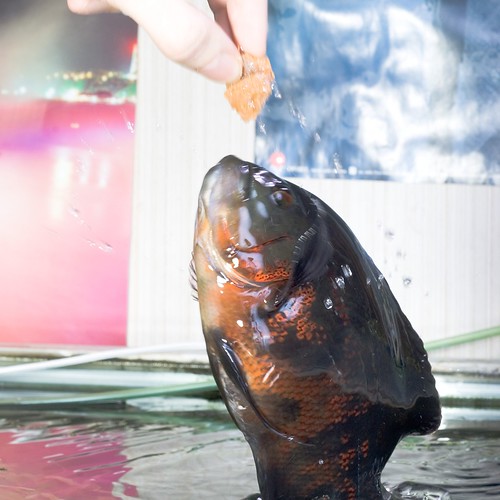
 that could fall on them as they move gravel around and avoid large stones they can pick up as you may come home one day to find your tank shattered and your fish and water on the floor. Generally, a piece or two of driftwood and some well made fake plants work well. Remember that oscars are big fish so do not take up a lot of room with decor. When cleaning, make sure to clean under and around all decorations and debris tends to accumulate there.
that could fall on them as they move gravel around and avoid large stones they can pick up as you may come home one day to find your tank shattered and your fish and water on the floor. Generally, a piece or two of driftwood and some well made fake plants work well. Remember that oscars are big fish so do not take up a lot of room with decor. When cleaning, make sure to clean under and around all decorations and debris tends to accumulate there.  silver dollars, larger clown loaches, most larger catfish, severums , chocolate cichlids and more. To keep oscars with other fish, especially if they are cichlids, a 150 gallon tank or larger is recommended. Make sure the fish are close in size to the oscar so they are not viewed as a potential snack. If you want to keep oscars together, keep either a pair, or keep 6 or more. Often if you only have 3 or 4, the dominant ones will constantly harass the weakest one until it dies, and then the next weakest and so on until you are left with only one or two oscars. Because a tank large enough to keep 6 adult oscars together is not usually feasible, it is best to keep them in a pair, alone or with other compatible fish.
silver dollars, larger clown loaches, most larger catfish, severums , chocolate cichlids and more. To keep oscars with other fish, especially if they are cichlids, a 150 gallon tank or larger is recommended. Make sure the fish are close in size to the oscar so they are not viewed as a potential snack. If you want to keep oscars together, keep either a pair, or keep 6 or more. Often if you only have 3 or 4, the dominant ones will constantly harass the weakest one until it dies, and then the next weakest and so on until you are left with only one or two oscars. Because a tank large enough to keep 6 adult oscars together is not usually feasible, it is best to keep them in a pair, alone or with other compatible fish. Oscars now come in a few different varieties. These include, red oscars, red tiger oscars, albino oscars, gold oscars and long finned oscars.
Oscars now come in a few different varieties. These include, red oscars, red tiger oscars, albino oscars, gold oscars and long finned oscars. 

